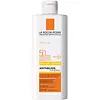What's inside
What's inside
 Key Ingredients
Key Ingredients

 Benefits
Benefits

 Concerns
Concerns

 Ingredients Side-by-side
Ingredients Side-by-side

Water
Skin ConditioningDimethicone
EmollientC12-15 Alkyl Benzoate
AntimicrobialIsohexadecane
EmollientTalc
AbrasiveStyrene/Acrylates Copolymer
Isododecane
EmollientCaprylyl Methicone
Skin ConditioningDicaprylyl Ether
EmollientTriethylhexanoin
MaskingDicaprylyl Carbonate
EmollientDimethicone/PEG-10/15 Crosspolymer
Aluminum Hydroxide
EmollientStearic Acid
CleansingPEG-9 Polydimethylsiloxyethyl Dimethicone
EmulsifyingPentylene Glycol
Skin ConditioningAlumina
AbrasiveAluminum Stearate
Cosmetic ColorantCaprylyl Glycol
EmollientDipropylene Glycol
HumectantDisteardimonium Hectorite
StabilisingMagnesium Sulfate
PEG-8 Laurate
EmulsifyingPhenoxyethanol
PreservativePolyhydroxystearic Acid
EmulsifyingPropylene Carbonate
SolventSodium Citrate
BufferingTocopherol
AntioxidantWater, Dimethicone, C12-15 Alkyl Benzoate, Isohexadecane, Talc, Styrene/Acrylates Copolymer, Isododecane, Caprylyl Methicone, Dicaprylyl Ether, Triethylhexanoin, Dicaprylyl Carbonate, Dimethicone/PEG-10/15 Crosspolymer, Aluminum Hydroxide, Stearic Acid, PEG-9 Polydimethylsiloxyethyl Dimethicone, Pentylene Glycol, Alumina, Aluminum Stearate, Caprylyl Glycol, Dipropylene Glycol, Disteardimonium Hectorite, Magnesium Sulfate, PEG-8 Laurate, Phenoxyethanol, Polyhydroxystearic Acid, Propylene Carbonate, Sodium Citrate, Tocopherol
Alcohol
AntimicrobialAluminum Hydroxide
EmollientAluminum Starch Octenylsuccinate
AbsorbentWater
Skin ConditioningBenzyl Benzoate
AntimicrobialBenzyl Salicylate
PerfumingBiosaccharide Gum-4
Skin ConditioningButylene Glycol
HumectantButylphenyl Methylpropional
PerfumingCamellia Sinensis Leaf Extract
AntimicrobialCitronellol
PerfumingCucumis Melo Fruit Extract
Skin ConditioningCyclopentasiloxane
EmollientDimethicone
EmollientDisodium EDTA
Geraniol
PerfumingGlycerin
HumectantHexyl Cinnamal
PerfumingHexyl Laurate
EmollientHydroxyisohexyl 3-Cyclohexene Carboxaldehyde
MaskingHydroxypropyltrimonium Maltodextrin Crosspolymer
Lapsana Communis Flower/Leaf/Stem Extract
Skin ConditioningLimonene
PerfumingLinalool
PerfumingMica
Cosmetic ColorantParfum
MaskingPPG-3 Glyceryl Ether
EmulsifyingPEG/PPG-20/15 Dimethicone
EmulsifyingPentylene Glycol
Skin ConditioningPhenoxyethanol
PreservativePEG-9 Polydimethylsiloxyethyl Dimethicone
EmulsifyingPolyglyceryl-4 Isostearate
EmulsifyingPotassium Sorbate
PreservativeRhodiola Rosea Root Extract
EmollientSodium Chloride
MaskingSodium Lauryl Sulfate
CleansingStearic Acid
CleansingThermus Thermophillus Ferment
Skin ConditioningTitanium Dioxide
Cosmetic ColorantTocopheryl Acetate
AntioxidantAlcohol, Aluminum Hydroxide, Aluminum Starch Octenylsuccinate, Water, Benzyl Benzoate, Benzyl Salicylate, Biosaccharide Gum-4, Butylene Glycol, Butylphenyl Methylpropional, Camellia Sinensis Leaf Extract, Citronellol, Cucumis Melo Fruit Extract, Cyclopentasiloxane, Dimethicone, Disodium EDTA, Geraniol, Glycerin, Hexyl Cinnamal, Hexyl Laurate, Hydroxyisohexyl 3-Cyclohexene Carboxaldehyde, Hydroxypropyltrimonium Maltodextrin Crosspolymer, Lapsana Communis Flower/Leaf/Stem Extract, Limonene, Linalool, Mica, Parfum, PPG-3 Glyceryl Ether, PEG/PPG-20/15 Dimethicone, Pentylene Glycol, Phenoxyethanol, PEG-9 Polydimethylsiloxyethyl Dimethicone, Polyglyceryl-4 Isostearate, Potassium Sorbate, Rhodiola Rosea Root Extract, Sodium Chloride, Sodium Lauryl Sulfate, Stearic Acid, Thermus Thermophillus Ferment, Titanium Dioxide, Tocopheryl Acetate
 Reviews
Reviews

Ingredients Explained
These ingredients are found in both products.
Ingredients higher up in an ingredient list are typically present in a larger amount.
Aluminum Hydroxide is a form of aluminum. It can be naturally found in nature as the mineral gibbsite. In cosmetics, Aluminum Hydroxide is used as a colorant, pH adjuster, and absorbent.
As a colorant, Aluminum Hydroxide may add opacity, or reduce the transparency. Aluminum hydroxide is contains both basic and acidic properties.
According to manufacturers, this ingredient is an emollient and humectant. This means it helps hydrate the skin.
In medicine, this ingredient is used to help relieve heartburn and help heal ulcers.
There is currently no credible scientific evidence linking aluminum hydroxide in cosmetics to increased cancer risk.
Major health organizations allow the use of aluminum hydroxide in personal care products and have not flagged it as a carcinogenic risk at typical usage levels.
Learn more about Aluminum HydroxideDimethicone is a type of synthetic silicone created from natural materials such as quartz.
What it does:
Dimethicone comes in different viscosities:
Depending on the viscosity, dimethicone has different properties.
Ingredients lists don't always show which type is used, so we recommend reaching out to the brand if you have questions about the viscosity.
This ingredient is unlikely to cause irritation because it does not get absorbed into skin. However, people with silicone allergies should be careful about using this ingredient.
Note: Dimethicone may contribute to pilling. This is because it is not oil or water soluble, so pilling may occur when layered with products. When mixed with heavy oils in a formula, the outcome is also quite greasy.
Learn more about DimethiconePEG-9 Polydimethylsiloxyethyl Dimethicone is a type of silicone.
Pentylene glycol is typically used within a product to thicken it. It also adds a smooth, soft, and moisturizing feel to the product. It is naturally found in plants such as sugar beets.
The hydrophilic trait of Pentylene Glycol makes it a humectant. As a humectant, Pentylene Glycol helps draw moisture from the air to your skin. This can help keep your skin hydrated.
This property also makes Pentylene Glycol a great texture enhancer. It can also help thicken or stabilize a product.
Pentylene Glycol also acts as a mild preservative and helps to keep a product microbe-free.
Some people may experience mild eye and skin irritation from Pentylene Glycol. We always recommend speaking with a professional about using this ingredient in your routine.
Pentylene Glycol has a low molecular weight and is part of the 1,2-glycol family.
Learn more about Pentylene GlycolPhenoxyethanol is a preservative that has germicide, antimicrobial, and aromatic properties. Studies show that phenoxyethanol can prevent microbial growth. By itself, it has a scent that is similar to that of a rose.
It's often used in formulations along with Caprylyl Glycol to preserve the shelf life of products.
Stearic Acid is a fatty acid. It is an emollient, emulsifier, and texture enhancer.
As an emollient, stearic acid helps soften skin. It aids the skin's protective barrier by preventing water loss. It also provides a gentle cleansing effect without stripping away natural oils.
Stearic acid may also be used to enhance the texture of products. It can add volume and stabilize ingredients such as water and oil. This can help water and oil ingredients from separating.
Sources of stearic acid include animal or vegetable fats/oils such as coconut or shea. It can be naturally found in butter, cocoa butter, shea butter, vegetable fats, and animal tallow.
This ingredient may not be Malassezia folliculitis, or fungal-acne safe.
Learn more about Stearic AcidWater. It's the most common cosmetic ingredient of all. You'll usually see it at the top of ingredient lists, meaning that it makes up the largest part of the product.
So why is it so popular? Water most often acts as a solvent - this means that it helps dissolve other ingredients into the formulation.
You'll also recognize water as that liquid we all need to stay alive. If you see this, drink a glass of water. Stay hydrated!
Learn more about Water